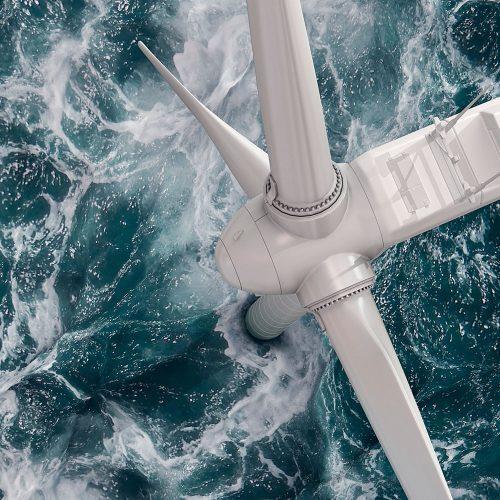
Scotland’s energy industry has now had some time to digest the results of arguably the most hotly anticipated offshore wind auction in history.
Released a week ago today, the results of the first leasing round in Scotland in more than a decade garnered a remarkable amount of interest from across the globe.
Crown Estate Scotland awarded option agreements to 17 offshore wind projects devised by some of the biggest names in oil and gas and renewables.
“This round will make Scotland a world leader in deployment of large scale floating wind and its associated supply chain and technologies,” said Graeme Rogerson, senior project manager at the Net Zero Technology Centre (NZTC).
“We congratulate all those who secured options, including our Net Zero Technology partners BP, Orsted, Shell and TotalEnergies.
“The supply chain development commitments from the winners’ amount to hundreds of millions, and these commitments must be realised to maximise this opportunity for Scotland.”
Now that the results have been revealed, the successful bidders will move onto the next stage of the process, with option agreements expected to be signed in April.
Following that, there may be a “clearing process” for suitable sites that don’t currently have a deal in place.
ScotWind 2
Given the scale of interest in ScotWind – 74 bids were made in total – there are many companies for whom last week was a disappointment.
Among the most notable not to make the shortlist were Norwegian energy giant Equinor, German wind pioneer RWE and Italian supermajor Eni.
That means that while the first ScotWind round still has a long way to go, there is already interest in when the next auction may be.

Melanie Grimmitt, head of energy at legal firm Pinsent Masons, said: “This leasing round has shown that there is significant appetite for investment borne out by the international and domestic, new and traditional developer groupings, bidding to secure seabed rights in Scotland.
“Crown Estate Scotland is expected to progress to planning for a ScotWind 2 seabed leasing round later this year, so developers will be keeping an eye out to see if and how the application process and criteria for the next round might differ from this one, given how popular and competitive it has been.”
It is not currently known when ScotWind 2 will be held and with work still ongoing on the initial procedure, it is unlikely to be imminent.
But Michael Matheson, Scotland’s energy secretary, has said there will be more rounds within the timeframe of the current parliament.
“I think we’ll get the next round late next year,” said Gary Bills, UK country manager at renewables consultancy K2 Management, “it makes sense to keep it to two years, that’s my view.”
Is it needed?
But on when it has to for Scotland to hit its target of net zero by 2045, Mr Bills has a straight answer – never.
“Given that we’ve just auctioned off around 25 gigawatts (GW) and Scotland’s peak load is about 14 GW, never is when it needs to be,” he said.
He added: “ScotWind has really taken the pressure off, especially considering there are projects still in the process of being developed and built, such as Moray West and Inch Cape.”
An equitable process
Working on the probable basis that more leasing rounds are in the pipeline, it raises the question of whether the process could be improved.
Mr Bills says that one of the big positive takeaways of ScotWind is that it delivered an evenhanded result.
A maximum threshold for bids was in place, unlike in the equivalent process in England and Wales, meaning it wasn’t just those with the deepest pockets that were successful.
Mr Bills said: “There’s a good spread of developers that were selected with many different types of skills. It’s also nice to have new entrants, although there’s a degree of risk attached to them.”
On what could be improved, he added: “Let’s see what happens in the supply chain; that is where the devil is in the detail.
“If the commitments that these companies have made are honored, then there probably isn’t much change required.
“If however we see that pledges aren’t delivered, then maybe we need to toughen up.”
But having been unsuccessful in the most recent round, and with the winners likely to go back in for more, will the likes of Equinor and RWE stick or twist on ScotWind 2?
Bills said: “I think they’ll definitely stick around, Scotland is too rich a picking. There is really high winds, foreseeable risk, bank financing is no problem, there’s Contracts for Difference (CfD). They will certainly be in the picture when the next round rolls around.”
INTOG
Beyond the ScotWind process there are other mechanisms through which developers can secure rights to build wind farms in Scottish waters.
Crown Estate Scotland expects to outline more details about the Innovation and Targeted Oil and Gas (INTOG) leasing process in the coming months.
INTOG will pave the way for the electrification of oil and gas asset, a key feature of efforts to slash the sector’s operational emissions.
Mr Rogerson said: “We look forward to working with our current and potential partners to develop and deliver the technologies in floating offshore wind, reducing cost, accelerating deployment and maximising local content.
“We now also look forward to the announcement on the INTOG leasing round from Crown Estate Scotland, which we believe will act as a stepping stone and ramp up for the delivery of the ScotWind projects.
Recommended for you


 © Supplied by NZTC
© Supplied by NZTC © PA
© PA © Supplied by Jan Arne Wold /Equin
© Supplied by Jan Arne Wold /Equin © Equinor
© Equinor